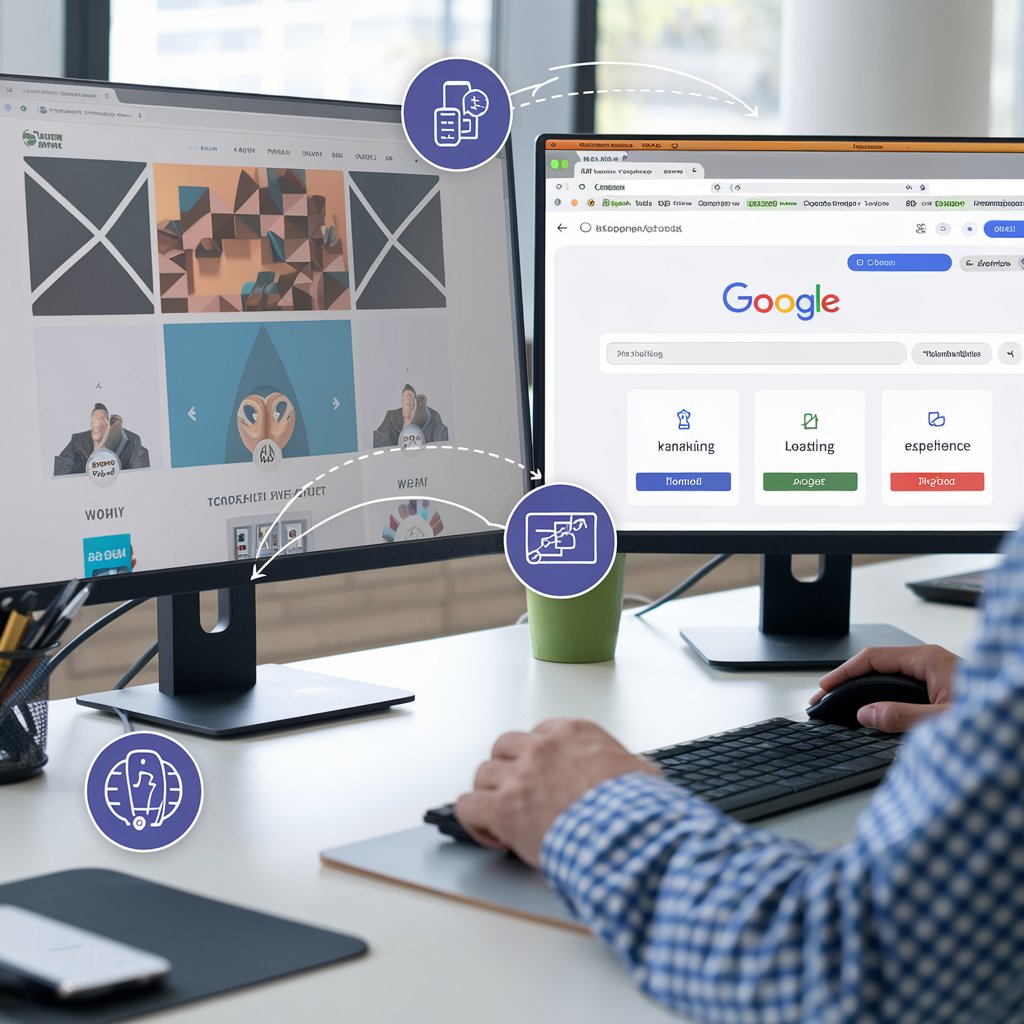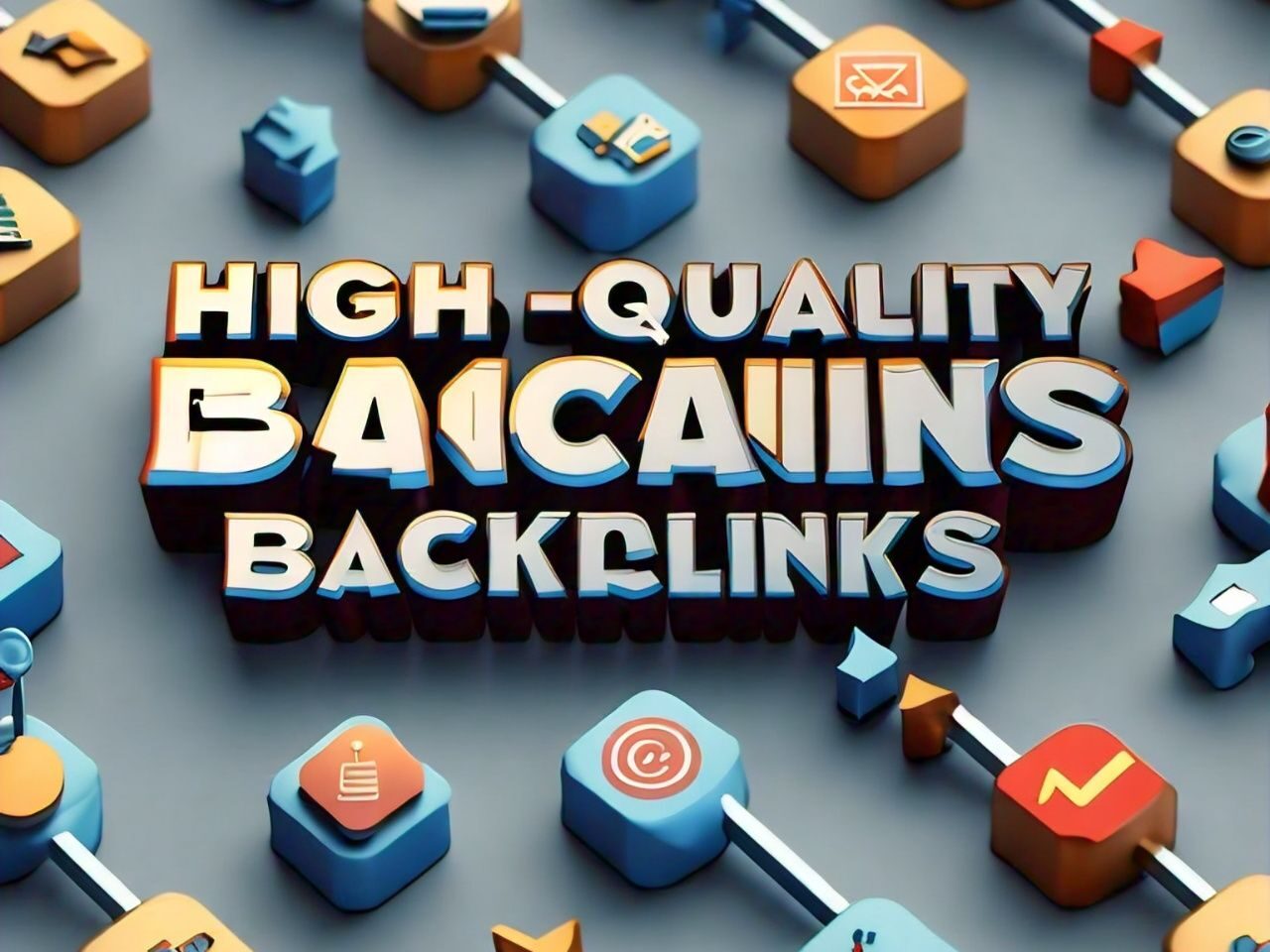Can I do my own SEO for my website without hiring an expert?
Having a website is crucial for any business. But having a website alone is not enough. Your website needs to be visible to your target audience. And that’s where Search Engine Optimization, or SEO, comes into play. SEO is the practice of optimizing your website to rank higher in search engine results.
It’s a critical aspect of digital marketing that can significantly boost your online visibility. But what if you’re a small business owner or a startup founder with a tight budget? Hiring an SEO expert might not be an option. So, can you do your own SEO for your website without hiring an expert? The answer is a resounding yes.
With the right knowledge and tools, you can implement effective SEO strategies on your own. This comprehensive guide is designed to empower you with actionable DIY SEO strategies. Whether you’re a blogger, a small business owner, or just someone looking to improve your website’s SEO, this guide is for you.

We’ll cover everything from understanding the basics of SEO to conducting keyword research, optimizing your website content, and measuring your SEO success. We’ll also delve into more technical aspects of SEO, such as link building, mobile optimization, and local SEO for small businesses.
By the end of this guide, you’ll have a solid foundation of SEO knowledge that you can use to improve your website’s visibility and attract more organic traffic. So, are you ready to dive into the world of DIY SEO? Let’s get started.
Understanding SEO and Its Importance
Before we delve into the nitty-gritty of DIY SEO strategies, let’s first understand what SEO is and why it’s so important. SEO, or Search Engine Optimization, is a set of strategies and techniques used to improve a website’s visibility on search engines.
What is SEO?
At its core, SEO is about making your website more attractive to search engines. Search engines like Google use complex algorithms to determine which websites are the most relevant and useful for a particular search query. By optimizing your website for these algorithms, you can improve your website’s ranking in the search engine results pages (SERPs). This can lead to more organic traffic, which is traffic that comes to your website naturally through search engines, rather than through paid advertising.
Why is SEO Essential for Your Website?
SEO is essential for your website for several reasons. Firstly, the higher your website ranks in the SERPs, the more visibility it has. This means more potential customers will see your website when they search for the products or services you offer. Secondly, SEO is a cost-effective marketing strategy.

While paid advertising can quickly eat into your budget, the traffic you gain from SEO is free. Lastly, SEO can help you target your audience more effectively. By using keywords that your target audience is likely to search for, you can attract more qualified leads to your website.
In other words, the people who visit your website through search engines are more likely to be interested in what you have to offer, which can lead to higher conversion rates. In the next section, we’ll start exploring the basics of DIY SEO.
The Basics of DIY SEO
Now that we understand what SEO is and why it’s important, let’s dive into the basics of doing it yourself. DIY SEO may seem daunting at first, especially if you’re not particularly tech-savvy. But don’t worry. With the right knowledge and tools, anyone can optimize their website for search engines. The first step in any SEO strategy is keyword research.

This involves finding the words and phrases that people are likely to use when searching for the products or services you offer. Once you’ve identified these keywords, you can use them to optimize your website’s content and meta tags. This will make your website more relevant to these search queries, which can improve your ranking in the SERPs.
Starting with Keyword Research
Keyword research is a crucial part of SEO. It’s all about understanding what your target audience is searching for and how you can make your website relevant to these searches. There are several tools you can use for keyword research, such as Google’s Keyword Planner or SEMrush. These tools can show you how often certain keywords are searched for, how competitive they are, and even suggest related keywords you might not have thought of.

Here are some tips for effective keyword research:
- Look for long-tail keywords. These are longer, more specific phrases that are less competitive and can attract more qualified leads.
- Consider user intent. Try to understand what the user is likely to be looking for when they use a particular keyword.
- Use location-based keywords if you’re a local business. This can help you attract customers in your area.
On-Page SEO Elements
Once you’ve identified your keywords, the next step is to optimize your website’s on-page elements. On-page SEO refers to the optimization of elements on your website that you have direct control over. This includes your content, meta tags, and website structure.
Here are some key on-page elements to optimize:
- Title tags: These are the titles of your web pages that appear in the SERPs. They should be descriptive, include your target keywords, and be under 60 characters.
- Meta descriptions: These are short descriptions of your web pages that appear under the title in the SERPs. They should be compelling, include your target keywords, and be under 160 characters.
- Headers: These are the headings and subheadings on your web pages. They should be used to structure your content and include your target keywords where relevant.
- Image alt text: This is the text that appears if an image can’t be displayed. It should describe the image and include your target keywords if relevant.
Understanding Off-Page SEO
Off-page SEO refers to the optimization of elements outside of your website that you don’t have direct control over. This primarily involves building backlinks, which are links from other websites to yours. Backlinks are important because they signal to search engines that your website is trustworthy and authoritative.
The more high-quality backlinks you have, the better your website will rank in the SERPs. However, not all backlinks are created equal. Links from reputable, high-authority websites are more valuable than links from low-quality websites. Therefore, it’s important to focus on building high-quality backlinks rather than just trying to get as many links as possible. In the next section, we’ll explore how to optimize your website content for SEO.
Optimizing Your Website Content
Content is king in the world of SEO. The quality and relevance of your website content play a significant role in how well your site ranks in search engine results. But what does it mean to optimize your content for SEO?

It involves strategically incorporating your target keywords into your content. This helps search engines understand what your content is about and how it should be indexed. However, it’s important to remember that your content should be written for humans first, search engines second. This means creating content that is engaging, informative, and valuable to your audience.
Crafting High-Quality, Engaging Content
Creating high-quality content is one of the most effective SEO strategies. But what makes content high-quality?
Firstly, it should be original. Duplicate content can harm your SEO, so always ensure your content is unique. Secondly, it should be well-written. This means using correct grammar and spelling, breaking up your content into manageable chunks, and using headings and subheadings to make it easy to read.
Thirdly, it should be valuable to your audience. This means providing useful information, answering common questions, or solving a problem your audience may have. Lastly, it should be engaging. This means using a conversational tone, including images or videos, and encouraging interaction through comments or social shares.
The Role of Meta Tags
Meta tags are snippets of text that describe a page’s content. They don’t appear on the page itself, but in the page’s code. Search engines read meta tags to learn what a page is about. While they may not directly impact your rankings, they can influence how many people click on your site in the search results.
There are several types of meta tags, but the most important for SEO are the title tag and the meta description. The title tag is the title of your page that appears in the search results. It should be concise, include your target keyword, and accurately describe the page’s content. The meta description is a brief summary of your page that appears under the title in the search results. It should be compelling, include your target keyword, and encourage people to click on your site.
Image and Multimedia Optimization
Images and multimedia can make your content more engaging and shareable. However, they can also slow down your page load time, which can harm your SEO. Therefore, it’s important to optimize your images and multimedia for SEO.
Here are some tips:
- Compress your images to reduce their file size without compromising quality.
- Use descriptive file names that include your target keyword.
- Use alt text to describe your images. This helps search engines understand what your images are about and can improve your SEO.
- Use video transcripts or captions. This makes your video content accessible to more people and provides more text for search engines to index.
In the next section, we’ll explore technical SEO and how to optimize your website’s backend for search engines.
Technical SEO for the Non-Tech-Savvy
Technical SEO might sound intimidating, especially if you’re not tech-savvy. But don’t worry. You don’t need to be a coding expert to implement basic technical SEO strategies.
Technical SEO refers to the process of optimizing your website’s backend structure. This helps search engines crawl and index your site more effectively. It includes aspects like site speed, mobile optimization, site architecture, and more. Let’s break down some of these elements.
Mobile Optimization and User Experience
More people are using mobile devices to browse the web than ever before. This means your website needs to be mobile-friendly.
But what does this mean? Firstly, your website should be responsive. This means it should automatically adjust to fit the screen size of the device it’s being viewed on. Secondly, your site should be easy to navigate on a mobile device. This means having large, easy-to-click buttons and a clear, simple menu. Lastly, your site should load quickly on mobile devices. Slow-loading sites can frustrate users and lead to high bounce rates.
Improving Page Speed
Page speed is a critical factor in both user experience and SEO. Slow-loading pages can frustrate users and lead to high bounce rates.

There are several ways to improve your page speed. These include compressing your images, minimizing your CSS and JavaScript files, and using a content delivery network (CDN). You can use tools like Google’s PageSpeed Insights to check your page speed and get suggestions for improvement.
Site Structure and Navigation
A well-structured website is easier for both users and search engines to navigate. This means having a clear hierarchy of pages, with each page being no more than a few clicks away from the homepage. Your site should also have a clear and simple navigation menu. This helps users find what they’re looking for quickly and easily. In the next section, we’ll delve into link building and social media strategies for SEO.
Link Building and Social Media Strategies
Link building is a crucial part of SEO. It involves getting other websites to link to your site.

These links, known as backlinks, help to build your site’s authority. They signal to search engines that your site is a trusted and reliable source of information. But link building isn’t the only strategy you can use to boost your SEO. Social media can also play a significant role.
Internal Linking Practices
Internal linking is a simple yet effective SEO strategy. It involves linking from one page on your site to another.

This helps to guide users through your site. It also helps search engines understand the structure and content of your site. When creating internal links, make sure to use descriptive anchor text. This helps search engines understand what the linked page is about.
Building Authority with Backlinks
Backlinks are links from other websites to your site. They’re like votes of confidence in your content. The more high-quality backlinks you have, the more authority your site has.

But not all backlinks are created equal. Links from high-authority sites are more valuable than links from low-authority sites. So, focus on getting links from reputable, relevant sites. Remember, quality over quantity is the key when it comes to backlinks.
Leveraging Social Media for SEO
Social media can be a powerful tool for SEO. It can help you reach a larger audience, drive traffic to your site, and boost your site’s visibility.
But it’s not just about posting links to your content. Engaging with your audience, sharing valuable content, and building a strong social media presence can all contribute to your SEO efforts. In the next section, we’ll explore local SEO strategies for small businesses.
Local SEO for Small Businesses
Local SEO is a subset of SEO that focuses on optimizing a website to be found in local search results. It’s especially important for small businesses that operate on a regional level, as opposed to a national or global level.
Local SEO can help your business stand out in the SERPs and attract more customers from your local area. It involves a range of strategies, from ensuring your website features in local directory listings to managing online reviews and ratings. Let’s delve deeper into how you can optimize your website for local search.
Optimizing for Local Search
Local search optimization is all about making sure your business is visible when people in your area search for the products or services you offer.
This involves optimizing your website and content with local keywords, such as the name of your city or region. It also involves claiming and optimizing your Google My Business listing, which can significantly improve your visibility in local search results. Remember to include your business name, address, and phone number on your website, and make sure this information is consistent across all online platforms.
The Importance of NAP Consistency
NAP stands for Name, Address, and Phone number. It’s crucial that this information is consistent across all platforms where your business is listed.
Inconsistent NAP information can confuse search engines and potential customers. It can also harm your local search rankings. So, make sure to regularly check and update your business listings to ensure NAP consistency.
Measuring and Analyzing Your SEO Success
SEO is not a one-time task. It’s an ongoing process that requires regular monitoring and adjustments.
You need to track your website’s performance to understand what’s working and what’s not. This will help you make informed decisions and improve your SEO strategy. Let’s look at some tools and techniques you can use to measure and analyze your SEO success.
Using Google Analytics and Search Console
Google Analytics and Google Search Console are two free tools that can provide valuable insights into your website’s performance.
Google Analytics can help you understand how people are finding and interacting with your website. It provides data on your website’s traffic, user behavior, and conversion rates. On the other hand, Google Search Console focuses more on your website’s visibility in Google’s search results.
It provides data on your website’s search performance, indexing status, and any technical issues that might be affecting your visibility in search results. Both tools can be integrated for a more comprehensive view of your website’s performance.
SEO Audits and Adjustments
Regular SEO audits are crucial for identifying and fixing issues that could be hurting your search rankings.
An SEO audit involves checking your website for technical issues, content quality, on-page and off-page SEO, and user experience. There are many SEO audit tools available online, both free and paid, that can help you conduct an effective audit. Once you’ve identified the issues, the next step is to make the necessary adjustments. Remember, SEO is a continuous process, and regular audits and adjustments are key to maintaining and improving your search rankings.
Common DIY SEO Mistakes to Avoid
While DIY SEO can be empowering, it’s not without its pitfalls. There are common mistakes that many beginners make when starting out with SEO. By being aware of these, you can avoid them and increase your chances of success. Let’s look at two of the most common DIY SEO mistakes: over-optimization and ignoring mobile users.
Over-Optimization and Keyword Stuffing
Over-optimization happens when you try too hard to please search engines. This often leads to keyword stuffing, where you use your target keywords excessively in your content.
While it’s important to include keywords in your content, overdoing it can harm your SEO. Search engines prefer natural, user-friendly content. So, focus on creating valuable content for your users, and use keywords naturally and sparingly.
Ignoring Mobile Users
With the rise of smartphones, more people are using mobile devices to browse the web. Ignoring mobile users is a big mistake in today’s digital landscape.
Your website needs to be mobile-friendly to provide a good user experience for all visitors. This includes having a responsive design that adapts to different screen sizes. Remember, a good user experience can lead to higher engagement and better search rankings.
Staying Updated with SEO Trends and Algorithm Changes
SEO is not a one-time task. It’s an ongoing process that requires you to stay updated with the latest trends and changes in search engine algorithms.
Google, the most popular search engine, frequently updates its algorithms to provide better search results. These updates can affect your website’s ranking, so it’s crucial to stay informed and adapt your SEO strategy accordingly. Let’s delve deeper into how you can keep up with these changes and future-proof your SEO.
Keeping Up with Google’s Evolving Algorithms
Google’s algorithms are complex and constantly evolving. They use hundreds of factors to rank websites in search results.
Staying updated with these changes can be challenging, but it’s essential for your SEO success. You can follow SEO news sites, join SEO communities, or subscribe to Google’s official blog for updates.
Adapting Your Strategy for Future-Proof SEO
Adapting your SEO strategy to the latest trends and algorithm changes is crucial. But remember, the core principles of SEO remain the same: providing valuable content and a great user experience.
So, focus on these aspects while also keeping an eye on the latest SEO trends. This way, you can ensure your SEO strategy is future-proof and can withstand any algorithm changes.
Conclusion: Empowering Yourself with DIY SEO
SEO can seem daunting, especially if you’re new to it. But as we’ve seen, it’s possible to do your own SEO without hiring an expert. With the right knowledge and tools, you can significantly improve your website’s visibility and ranking in search results.
Recap of Key DIY SEO Strategies
We’ve covered a lot in this guide, from understanding the basics of SEO to implementing advanced strategies. Remember, the key to successful SEO is providing valuable content, optimizing your website for search engines, and building quality backlinks.
Also, don’t forget to measure your success and adjust your strategies based on the results.
Next Steps and Further Learning
Now that you have a solid foundation, the next step is to put these strategies into action. Start with small changes, measure the impact, and gradually implement more advanced strategies.
And remember, SEO is a long-term game. It takes time to see results, so be patient and persistent. Keep learning and staying updated with the latest SEO trends. There are plenty of resources available online, including SEO blogs, webinars, and courses. Good luck with your DIY SEO journey!
FAQ Section
We’ve covered a lot of ground in this guide. But you may still have some questions. Let’s address some of the most common ones.
Can SEO be done for free?
Yes, SEO can be done for free. Many of the strategies we’ve discussed in this guide don’t require any financial investment.
How to do SEO for beginners?
Start by understanding the basics of SEO. Then, focus on creating high-quality content, optimizing your website, and building backlinks.
What is the first step to start SEO?
The first step is to understand your audience and conduct keyword research. This will help you create content that your audience is searching for.
Do I need SEO for my website?
If you want your website to be found by search engines and users, then yes, you need SEO. It’s essential for increasing your online visibility and attracting organic traffic.
What are 5 easy, DIY SEO tips a small business can take?
- Conduct keyword research to understand what your audience is searching for.
- Optimize your website’s meta tags and content for your target keywords.
- Create high-quality, valuable content that answers your audience’s questions.
- Build quality backlinks from reputable websites in your industry.
- Regularly monitor your website’s performance and adjust your strategies as needed.

